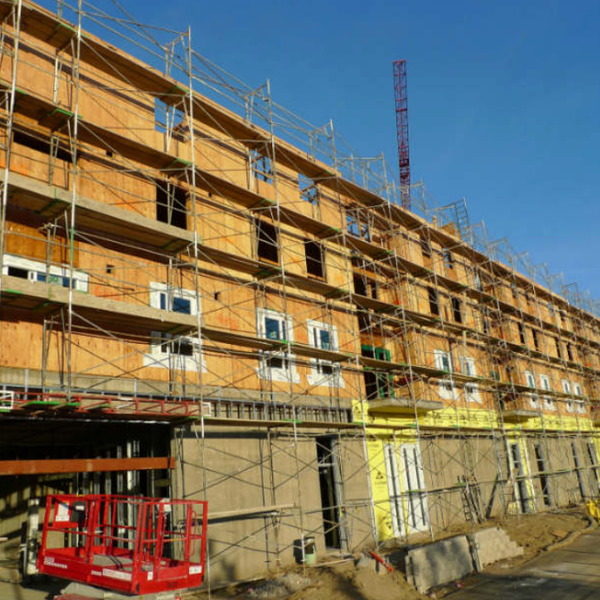Students who take out loans aren’t receiving special favors. They’re making financial transactions like any other.
Do we make both a conceptual and analytical mistake when we refer to student loans as a form of “financial aid”? Should that term be something to be resisted? Demos’ Tamara Draut brought up this point in a conversation recently, and I think it needs to be explored further, because it frames how we speak about student loans.
The government records and documents student loans as a form of aid. Here’s a list of the “amount of financial aid awarded to full-time, full-year undergraduates, by type and source of aid,” and loans are listed right next to grants. When pundits say that “student aid” has exploded over the past decade, and argue that aid is driving increases in tuition, it disguises that the aid that has exploded is a signficant amount of debt for young people.
I’ve taken out loans and received gifts. When I’ve signed up for, say, a car loan, I never went “oh you shouldn’t have” afterwards, like when I’ve received a really nice birthday gift. I understood that the creditor wanted to lend me a certain amount of money at a certain rate, and I wanted to borrow it. Full stop. Unless the interest rate charged is purposely manipulated for some reason [1], there’s no reason to think of this as aid at all.
Student loans are an economic transaction, the same as if the government contracted out to build a bridge, or hired a person to serve in the military or police force or be a teacher. The money spent here isn’t “aid.” Hiring someone to build a bridge exchanges labor for cash. Student loans exchange cash now for cash later plus interest. Those student loans would be underprovided without the government, certainly, but in the same way that bridges and law enforcement and other goods would also be underprovided if they weren’t done by government.
I think this clarifies some of the issues and responses I’m seeing in the discussion about whether or not higher education is driven by increases in so-called “aid.” Megan McArdle wrote in Newsweek, “In a normal market, prices would be constrained by the disposable income available to pay them. But we’ve bypassed those constraints by making subsidized student loans widely available.” Let’s leave aside the issue that the vision of education constrained by disposable income is Mitt Romney’s vision that students should get “‘as much education as they can afford.” There’s a bigger issue.
I’m not sure what “normal market” means here, but many kinds of markets, perhaps even all of them, aren’t constrainted by disposable income. Major, long-term debt fuels all kinds of important purchases, from houses to cars to health care to big-ticket durable goods. Events like retirement or having kids are dictated by longer-term savings decisions. Much of your monthly spending, like your rent or your cell phone, is in a contract that stipulates some future payments must be made regardless of your disposable income. There’s a reason economists talk about spending as influenced by lifetime incomes.
Student loans are a way of mitigating a credit constraint, which is different than providing aid. Here it reflects not subsidized demand, but actual demand smoothed over a long time period. That’s going to put a lot of demand into play. It shouldn’t surprise us that demand is very high when credit constraints are removed. Higher education is one of the most important mechanisms of social and economic mobility we have, and it is also one of the primary ways we have for people to fully develop their talents and capabilities.
If actual demand overwhelms the supply of the system, that’s a problem of supply, not demand. And the obvious solution is to increase the supply. Throughout our country’s history we’ve done that in landmark bills that do it through public provisoning paid for by taxation, bills like the Morrill Act and California Master Plan. Now, as that system is left to crumble, we are looking to the private, for-profit sector to fill that gap. I fear that will only exacerbate the cost problems we’ve seen so far, and the data is looking that way too.
But if not as a form of financial “aid,” how should we refer to student loans?
[1] There’s a narrow, though important, question about whether or not student loans are a “subsidy” because their interest rates are too low or too high. The Department of Education found that (R-10) for ”Direct Loans, the overall weighted average subsidy rate was estimated to be -13.91 percent in FY 2011; that is, the overall program on average was projected to earn about 13.91 percent on each dollar of loans made, thereby providing savings to the Federal Government.” What’s a good word for the opposite of a subsidy? Whatever it is, student loans are that. Others argue that there needs to be a higher discount rate used to calculate this, and then you would see a subsidy. Let’s assume for this post that the interest rate is seen to be fair by all parties.
Cross-Posted From Rortybomb








